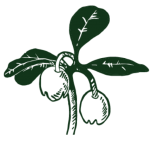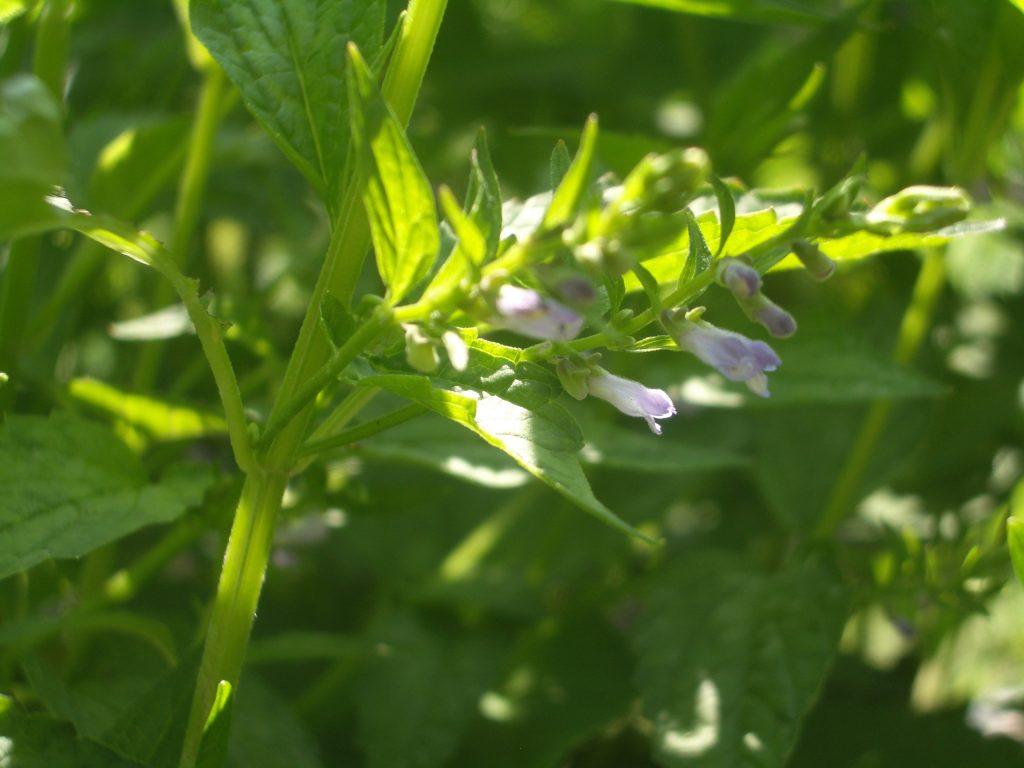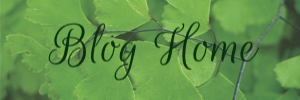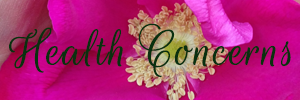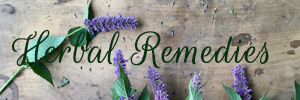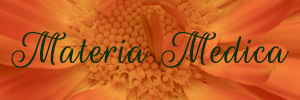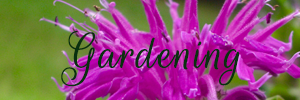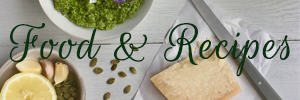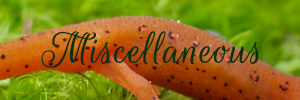Practice and Empower Yourself With These Important Skills ~
Fortunately, learning how to identify plants can be incredibly fun. A new plant that you don’t already know becomes “the next Great Plant Mystery,” and the process of sleuthing out its identity helps you look more closely at and connect with each plant. Let’s get started!
1. Pick up some field identification guides. These can be organized in different ways. Some are arranged by flower color (which might seem appealing until you realize that what you think is “purple” could be considered white, blue, or pink by a botanist), leaf arrangement, the number of flower petals, type of flower, and/or plant family. Books use illustrations or photographs, and these are only as good as the quality of the image and how well it really represents the plant. Here in the Northeast, by far my two favorite resources are Newcomb’s Wildflower Guide and the New England Wildflower Society’s GoBotany website gobotany.newenglandwild.org, but I keep others on hand (see the Recommended Reading page of WintergreenBotanicals.com for a full list). If you live elsewhere, see “Books Our Botanists Use” on the USDA website, and ask your local native plant society, Audubon center, naturalist, and/or herbalist. Try looking it up a few wildflowers in various field guides to see which guides work best. Be sure to read each book’s introduction to get a sense of how it’s organized; this will help you flip through the pages much
2. Find a wildflower in bloom. Got that? It needs to be wild, in bloom, and a wildflower (which means it dies back in winter, usually with no woody growth). This works best if you physically have your field guide(s) and the actual plant in front of you so you can inspect finer details. It’s almost impossible to key out a plant with 100 percent certainty if it’s not in flower. Also, keep in mind that most of your field identification guides are limited to wildflowers, which means they won’t include flowering shrubs or trees – you’ll need a tree or shrub field guide for those. While some garden herbs might be featured in a wildflower guide if they’re known to exist in the wild or escape gardens, most cultivated plants will not be covered.
3. Examine your plant. Look at the features as they’re organized in your field guide. For example, if you’re using Newcomb’s Field Guide, first you’ll look at the flower.
- Flower Questions: Is it symmetrical (“regular,” like a daisy) or asymmetrical (“irregular,” like a lipped mint-family flower or pea-family flower with its banner, wings, and keel)? If it’s “regular,” how many petals does it have? What color is it?
- Leaf Questions: Then take a look at how the branches and leaves are arranged. Does it have opposite, alternate, whorled (three or more opposite), basal (only at the bottom), or absent leaves? Is the leaf simple or “entire” or is it compound or “divided,” breaking down into several little leaflets on one leaf. (Yarrow, red raspberry, and elder have compound leaves.)
- Additional Questions: Also look where it’s growing, the time of year it’s blooming, and any other unique features like the edge (margin) of the leaf (smooth, lobed, toothed…), thorns or bristles along the stem, leaf venation, etc.
- The Good News: Thankfully, you do not need a botany degree to decipher the language. Most wildflower guides are geared towards everyday people and have a glossary in the front or back of the book, and several will also include an illustrated guide to some of the key terms used in the book. Some even have a ruler marked on the book jacket. Google terms you don’t know.
4. Look at the pictures and the descriptions: Leaf through the book, paying attention to how it’s organized and your plant’s characteristics. When you get to the right section, start looking more closely at the images for one that looks like yours. When you think you’ve got one, be sure to also read the description because it will have important confirming information that might not be obvious in the image. For example, it might note bristles on the base of the stem, or a soft fuzzy texture, or a distinctive aroma. Flower color and leaf shape can vary a bit from location to location, but leaf arrangement, flower arrangement, and flower parts usually do not. This is tricky because it’s the opposite of which characteristics are most distinctive in our
5. Confirm it. Look the plant up in one or more additional guides. Does everything still match up? Is there another species that it could be instead that perhaps wasn’t included in your initial field guide or was not very well illustrated? Double-check any old or new Latin names for the same plant (more on that in a moment). Do a Google image search as well, keeping in mind many photos are inaccurately labeled. Government and botanical websites tend to be more accurate, including USDA Plants Database, New England Wildflower Society’s GoBotany, Texas’ Ladybird Johnson Wildflower Center, WildflowerSearch.org, and Henriette’s Herbal. As a last resort, ask on Facebook groups such as Botany Everyday and Plant Identification (then, double-check the suggestions against your guides). Plants can appear a tad different from place to place, but if something isn’t quite right, listen to your gut and continue searching. Don’t force it to fit. Here are some examples from my own plant mysteries:
- A new weed that came in with the compost that seemed like it could only be chickweed (Stellaria media), but it had a different number of flower stigma was arranged a bit differently (divided into 5 points rather than three). It turned out to be water chickweed (Myosoton aquaticum), a recent alien species to my area which is why it wasn’t included in my usual field guides (most of which were written in the 1970s and haven’t been updated since). They are both edible.
- A flowering shrub that looked similar cramp bark (Viburnum opulus) in the guides, but when fall came, it produced purple-blue berries not red. It turned out to be maple-leafed viburnum ( acerifolium), which, as it turns out, also has a slightly different leaf shape, less robust growth habit in general, and prefers drier soil. They do have similar uses.
- A plant with white flowers that turned into blue-purple berries and divided leaves that a student was hoping was elder. But, this had opposite rather than alternate leaves and a different growth pattern of the flower head, and upon closer inspection also had bristles on the bottom. It turned out to be bristly spikenard (Aralia hispida). They are completely unrelated and do not share any medicinal properties.
6. Think you’ve got the right plant? Great! Keep watching it throughout its growing season. If you’re new to plants and identification, I recommend watching a plant for a full year (or two, for biennials) before harvesting and ingesting it. Look at its seeds or fruits for additional confirmation. The wildflower guides may not include images of this but will often describe them, and online resources that list multiple pictures can be useful. This extra time might feel unnecessary, but it gives you a chance to really get to know the plant and feel completely confident in your identification of it. Take classes and double-check with your local herbalist or naturalist.
7. Practice Makes Perfect! Your skill and confidence will grow over time. Carry your favorite field guides around and practice identification on every new wildflower you see. Have fun with it. Don’t put pressure on needing to find X medicinal herb in the wild or harvesting them for food and medicine. Simply get to know what you have without harvesting, eating, or using them at first. As time goes on and your confidence and skills develop, you can begin harvesting and consuming them. If you live with children or fellow budding botanist/herbalist/naturalist/gardeners, practice together and share your discoveries. Practice! Practice! Practice! It’s fun! 😀
Don’t get too overwhelmed. You don’t need to know the identity of every single plant around you. Just the one in front of you. Have fun, and (did I mention this already?) practice! Take local classes and join in on herb walks, as available (when the global pandemic passes).
Common Pitfalls
Taking Someone Else’s Identification for Granted: Never assume that you know a plant’s identity because someone told you that’s what it was, or you bought it with a label, or because you’re pretty sure from memory, or because you knew the plant well when you lived in a different bioregion. Mistakes happen. All. The. Time. Plants can look different in different habitats, or perhaps you’ve found a look-alike that you haven’t met before. While poisonous mix ups are rare, they do happen occasionally.
Relying on Just One Identification Guide/Not Every Field Guide Has Every Plant: No book will contain all species of plants in your area (just the common ones), and some simply might be more difficult to flip through to find your plant or have better pictures or descriptions. Also note that some of the older field guides may not contain up-to-date Latin names or newer alien species. Keep in mind that most wildflower guides will not include trees, shrubs, or cultivated plants.
Expecting a Website or App to Have It All: With a few exceptions, like the aforementioned GoBotany, most websites and apps are woefully (and dangerously) limited in the amount of plants they cover, and they can be difficult to “flip” through to find your plant. I’ve yet to find any app that is sufficient for identification.
Poisonous Plants: Make a point to learn the deadly plants in your area so you can avoid them both as toxic look-alikes and as potential hitchhikers when harvesting plants. The most common deadly mix up is foxglove, a biennial weed (with several different species) that looks quite a bit like mullein, comfrey, lance-leafed plantain, and other edible and medicinal plants before they bloom – a cup of tea or one leaf in your smoothie can kill you. Other common deadly poisonous include aconite, poison hemlock, water hemlock, bryony, veratrum, and certain mushrooms including amanita. Medicinal and edible field guides are handy here because they will include poisonous plants (telling you that they’re poisonous) and alert you to look-alikes for medicinal and edible plants.
Medicinal or Edible Plant Field Guides: These are great guides for backup only, not for trying to sleuth out the identity of any random wildflower. That’s because their scope is limited to only plants that are medicinal or edible and poisonous. That said, they have useful information that field guides will not, such as toxicity, poisonous look alike plants, and a general idea of its uses (though “herbals” will give you better usage and caution information).
Common Versus Latin Name and Changing Latin Names: Common names are tricky because they can refer to more than one plant, and one plant can also have various common names. Latin names are more consistent, but be aware that Latin names get updated periodically (Wikipedia usually lists the most up-to-date name, plus common old names). Even an out-of-date Latin name will refer only to one plant is more accurate than a common name. For example, several plants are called “chamomile” and the German chamomile species is currently known as Matricaria chamomilla, though old names Chamomilla recutita or Matricaria recutita may still be listed in older field guides or herbals.
Expecting a Field Guide to Tell You How to Use the Plant: Field guides only help you identify plants. Most won’t tell you if it’s toxic or useful or how to use it (and those that do, like the medicinal field guides, are usually inadequate). Once you’ve identified your plant, you’ll use an “herbal” to help you learn how to properly and safely use it. You will also want to partake in ethical and sustainable wildcrafting, which is easily an article in and of itself – see my Virtual Herb Walk page of WintergreenBotanicals.com for tips.
Lastly, a little secret: It’s much easier to identify spring and early summer wildflowers than late summer and fall wildflowers. As we get to the end of the season, most of the flowering plants are in the aster family (such as asters and goldenrods), and it can be difficult to key out this enormous plant family down to the exact species. Practicing identification early in the season also comes in handy because every flower is a cause for celebration, and we want to know what they all are. But late summer, we’re so busy keeping up with the garden that the thrill of identification gets lost in the shuffle.
Identification and Wild Medicinal Plant Resources
My Favorite Field Guides for the Northeast
- Lawrence Newcomb, Newcomb’s Wildflower Guide – The BEST field guide for our area (organized by flower shape and leaf arrangement NOT by bloom color, great mostly B&W illustrations, includes distinctive flowering trees and shrubs, which most other wildflower guides do not include, but Latin names are very out of date, so double-check for the most current one on Wikipedia.)
- GoBotany website by the Native Plant Trust, https://gobotany.nativeplanttrust.org – An exception to the rule, this is an excellent source to key out plants (use the Simple ID Key, it will take some practice!) or simply look up a plant for more info and photos of the plant in various stages. Bonus – it includes trees, shrubs, and other types of plants, too. Downside – it only covers New England and is not as good at describing unique plant features the way Newcomb’s does.
- Marilyn J. Dwelley’s New England-specific guides – Spring Wildflowers, Summer and Fall Wildflowers, and Trees and Shrubs (easy to use, organized by color and then by plant family, which is pretty cool, alas, terrible illustrations), but they appear to be out of print and hard to get now.
- Audubon Field Guide to Wildflowers Eastern Region (organized by color, good photos), also a Western version
- Ted Elliman & New England Wildflower Society’s Wildflowers of New England (well organized by color, then flower shape and leaf arrangement, photos not always great representations, up to date Latin names)
- Peterson’s Wildflowers of the Northeast (organized by color, expansive, but slow to flip through, ok illustrations) – NOT my favorite. They also have Edible and Eastern/Central Medicinal and Western Medicinal guides, but they are NOT SUFFICIENT as the sole source for plant identification, though they can be handy for backup and do include toxic plants and toxic look-alikes.
For other regions, check with your local herbalists, naturalists, and Audubon centers. 7Song is an amazing herbalist with a botany and wildcrafting specialty who offers many fabulous suggestions on his Resources page especially this list. He is also in the Northeast but travels extensively throughout the United States.
Some of My Favorite Herbals for Wild Backyard Plant Medicine
Herbals will not, alone, suffice to identify a plant, but they will help give you some key identifying features to confirm it, and (more importantly) tell you how to use the plant medicinally or for food. So, use a field identification guides to identify your plant first, then pull out your herbals to get some last confirmation then learn how to harvest and use it..
- Wild Remedies by Rosalee de la Foret and Emily Han – Fabulous book for common key medicinal and edible plants but also for the core foundational teachings on plant ethics, wildcrafting, sustainability, connecting with the plant world, botany, and much more
- Michael Moore’s books and website (Southwest and West Coast, though many herbs covered also grow across the United States)… one of my favorites is Medicinal Plants of the Pacific West, which does include a lot of plants also found here on the East Coast.
- Julie Bruton-Seal and Matthew Seal’s Backyard Medicine
- Matthew Wood’s Earthwise Herbal (especially the New World volume)
- J.J. Pursell’s The Herbal Apothecary – while this has a lot of lesser known wild medicinal plants of the United States, it’s not my favorite herbal overall, and it does include some plants that are not very safe and/or are unethical to harvest
- Arthur Haines’ Ancestral Plants, Volumes 1 and 2 (Northeast) – amazing resource for foraging in the northeast that also includes some medicinal info – small press and hard to find, best (and cheaper!) to buy direct from the author here.
- Timber Press’ Medicinal Plants guides by region (Pacific Northwest, Midwest, Mountain States)
- Phyllis Light’s Southern Folk Medicine (Southeast)
- Patricia Kyritsi Howell’s Medicinal Plants of the Southern Appalachians (Southeast)
Additional Resources
- My Recommended Reading Page.for more book recommendations for identifying plants, bioregional herbalism, foraging for edibles, medicinal mushrooms, and more.
- My free Spring Medicinal Wild Plant webinar video here
- My Virtual Herb Walks which are updated seasonally (other seasons can also be accessed from the top menu bar)
- My Quick Handout on Common Wild Medicinal Plants (just to glean from, you’ll need more info to identify and lean how to properly use these plants)
- Thomas Epel’s Botany in a Day – Not really an herbal nor a field guide, it’s good start to medicinal plant botany. Learn identification by plant families. Great illustrations, easy to understand. Also shares some common medicinal characteristics within a plant family or genus.
- 7Song’s website, blog, resource page, videos, on FaceBook, etc.
Clinical herbalist Maria Noël Groves sees clients and teaches classes at Wintergreen Botanicals Herbal Clinic & Education Center in Allenstown, New Hampshire.
The statements made on this blog have not been evaluated by the FDA and are not intended to diagnose, prescribe, recommend, treat, cure, or offer medical advice. Please see your health care practitioner for help regarding choices and to avoid herb-drug interactions.
Links to Amazon books are affiliate links. I’m recommending the books because I do like and recommend them. If you make a purchase via these links, you don’t pay more but I will get a few pennies of kick back on your purchase. Of course, if you have the opportunity to purchase direct from the authors or a local indie bookstore, that’s even better.
A version of this article originally appeared in Herb Quarterly magazine.
Leading photo of this blog is of the mint-family wildflower called skullcap (Scutellaria lateriflora). Other plants (including other skullcap species and some toxic plants, like germander) are commonly misidentified as skullcap, used in its place in products, and incorrectly subbed in for photographs in magazines, books, articles, and more. Yet, with an attentiveness to your identification process, it’s really not hard to tell it apart! Some key features include the little “scute” projection on the flower calyx, the shape of the flower (including a top lip that folds over like a cap – skull cap), funky shaped seed pod, leaf shape, and the way all the flowers face on direction (lateral flowers = lateriflora). Like other mint-family plants, it has square stems, opposite leaves and irregularly shaped lipped flowers.
